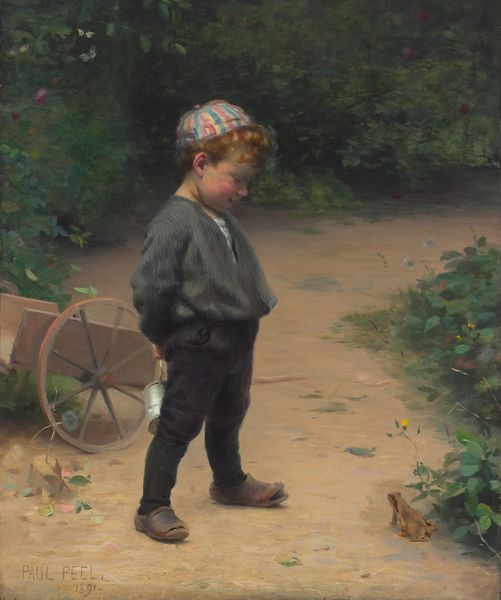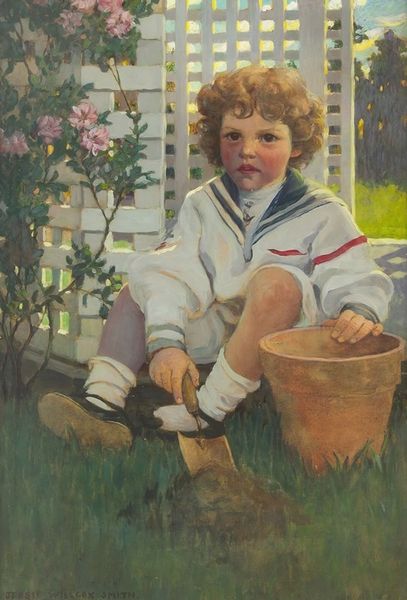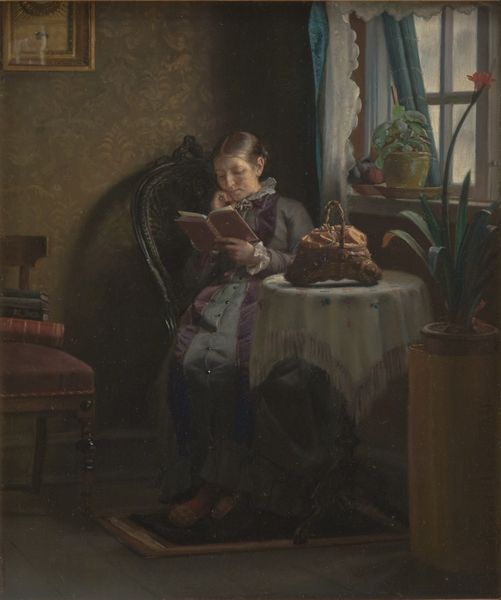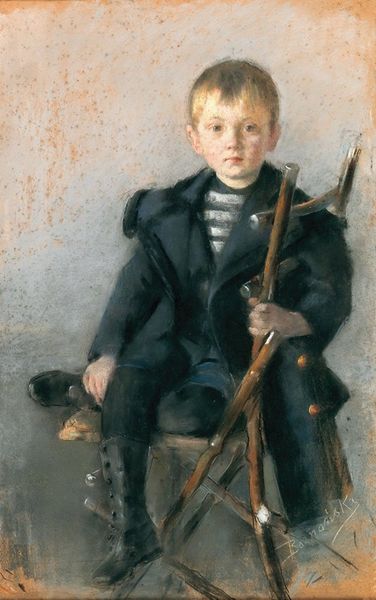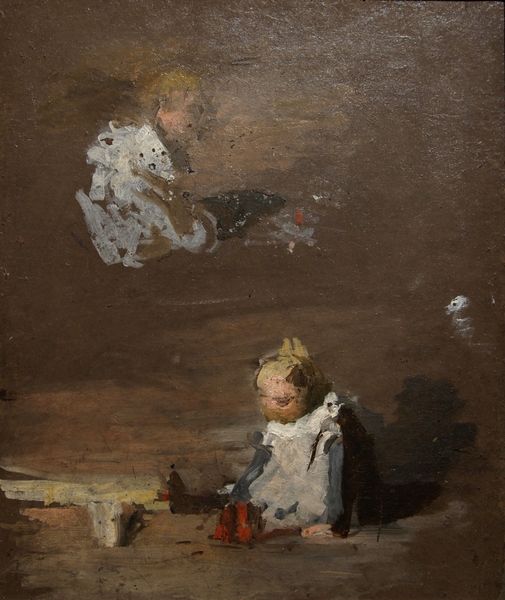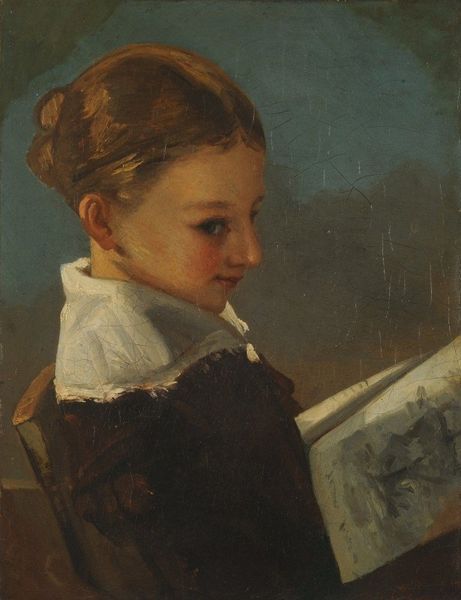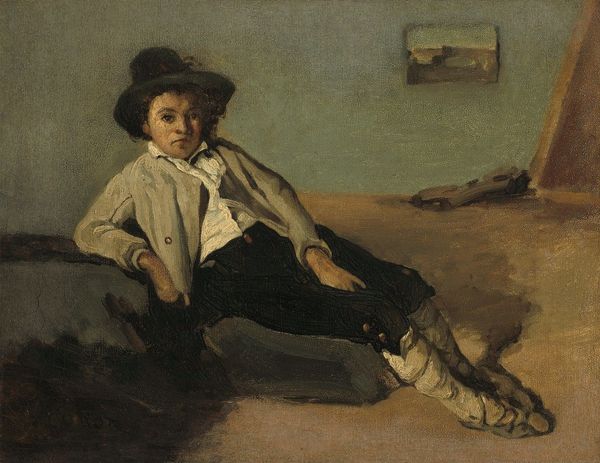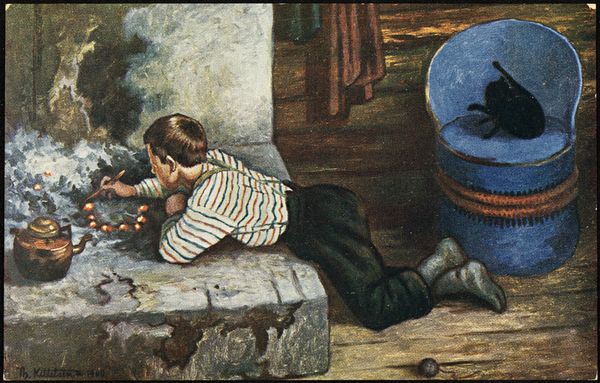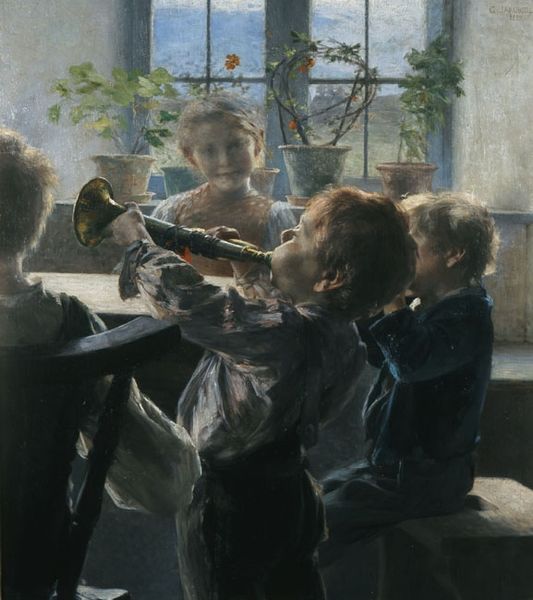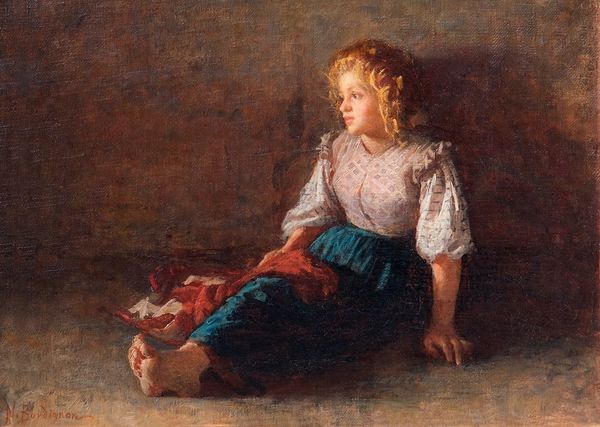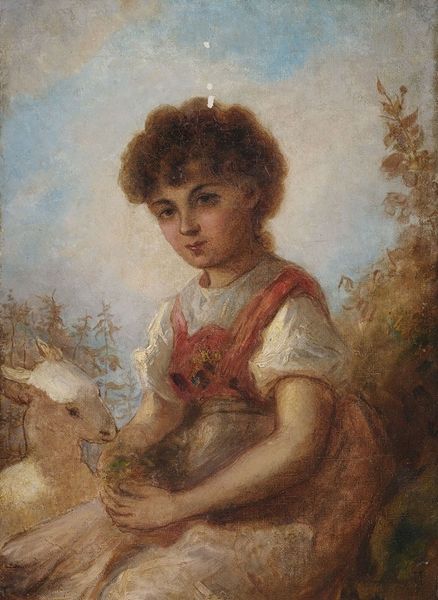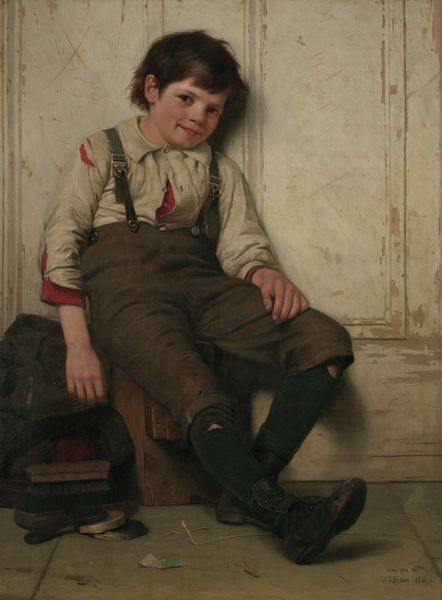
Copyright: Public Domain: Artvee
Curator: Welcome. Before us, we have Hans Thoma's "A Young Boy on a Bench with Flower Pots and a Wicker Basket," an oil on canvas completed in 1882. Editor: My first impression is one of subdued warmth. There's a sense of quiet observation here, a moment captured in a rustic setting, despite the muted tones. Curator: Indeed. Thoma masterfully uses light and shadow to draw the viewer's eye to the boy’s face, rendering him almost sculpturally against the darker background. Semiotically, the flowers and the basket serve to connect the child with themes of nature and domesticity, framing him as part of an ordered existence. Editor: Considering its means of production, the brushstrokes are remarkably visible, aren't they? You can almost feel the labor behind building up the textures, especially in the wicker basket. I wonder what purpose that basket would have served; clearly some manner of labour and production. It stands as a raw contrast to the delicate blooms of the geraniums beside it. Curator: I see that contrast not merely as one of material versus the floral, but as a duality reflective of innocence versus experience. The wicker and wood denote construction, whereas the delicate nature of the blossoms hint at fleeting beauty. It may indicate life’s journey. Editor: Yes, and thinking more deeply of that labor, what implications arise as it features children? Child labor was indeed quite rampant during the period in which it was crafted. Curator: Thoma frequently imbued his portraits with elements of the pastoral, idealising the German countryside. Editor: Despite those clear hints of idealized life, though, the raw materials, like the coarse canvas, speak volumes. Curator: Well said. It’s a portrait of the time, undoubtedly, constructed meticulously and, in viewing it, hopefully revealing those elements of life and the idealization that can occur within. Editor: Definitely. It's fascinating how delving into the production and materials deepens the narratives present in Thoma's work.
Comments
No comments
Be the first to comment and join the conversation on the ultimate creative platform.
